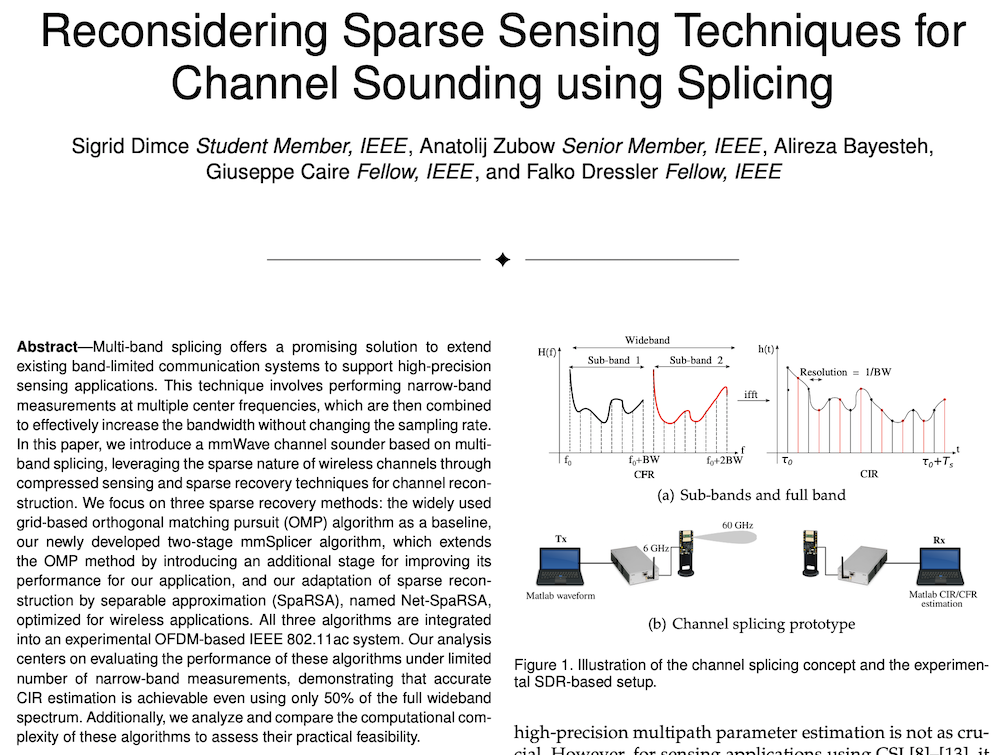Literature Database Entry
shah2005when
Rahul C. Shah, Sven Wiethölter and Adam Wolisz, "When does opportunistic routing make sense?," Proceedings of 1st International Workshop on Sensor Networks and Systems for Pervasive Computing (PerSeNS 2005), Kauai Island, HI, March 2005.
Abstract
Different opportunistic routing protocols have been proposed recently for routing in sensor networks. These protocols exploit the redundancy among nodes by using a node that is available for routing at the time of packet transmission. This mitigates the effect of varying channel conditions and duty cycling of nodes that make static selection of routes not viable. However, there is a downside as each hop may provide extremely small progress towards the destination or the signaling overhead for selecting the forwarding node may be too large. In this paper, we provide a systematic performance evaluation, taking into account different node densities, channel qualities and traffic rates to identify the cases when opportunistic routing makes sense. The metrics we use are power consumption at the nodes, average delay suffered by packets and goodput of the protocol. Our baseline for comparison is geographic routing with nodes being duty cycled to conserve energy. The paper also identifies optimal operation points for opportunistic routing that minimizes the power consumption at nodes.
Quick access
Contact
Rahul C. Shah
Sven Wiethölter
Adam Wolisz
BibTeX reference
@inproceedings{shah2005when,
author = {Shah, Rahul C. and Wieth{\"{o}}lter, Sven and Wolisz, Adam},
title = {{When does opportunistic routing make sense?}},
address = {Kauai Island, HI},
booktitle = {1st International Workshop on Sensor Networks and Systems for Pervasive Computing (PerSeNS 2005)},
month = {3},
year = {2005},
}
Copyright notice
Links to final or draft versions of papers are presented here to ensure timely dissemination of scholarly and technical work. Copyright and all rights therein are retained by authors or by other copyright holders. All persons copying this information are expected to adhere to the terms and constraints invoked by each author's copyright. In most cases, these works may not be reposted or distributed for commercial purposes without the explicit permission of the copyright holder.
The following applies to all papers listed above that have IEEE copyrights: Personal use of this material is permitted. However, permission to reprint/republish this material for advertising or promotional purposes or for creating new collective works for resale or redistribution to servers or lists, or to reuse any copyrighted component of this work in other works must be obtained from the IEEE.
The following applies to all papers listed above that are in submission to IEEE conference/workshop proceedings or journals: This work has been submitted to the IEEE for possible publication. Copyright may be transferred without notice, after which this version may no longer be accessible.
The following applies to all papers listed above that have ACM copyrights: ACM COPYRIGHT NOTICE. Permission to make digital or hard copies of part or all of this work for personal or classroom use is granted without fee provided that copies are not made or distributed for profit or commercial advantage and that copies bear this notice and the full citation on the first page. Copyrights for components of this work owned by others than ACM must be honored. Abstracting with credit is permitted. To copy otherwise, to republish, to post on servers, or to redistribute to lists, requires prior specific permission and/or a fee. Request permissions from Publications Dept., ACM, Inc., fax +1 (212) 869-0481, or permissions@acm.org.
The following applies to all SpringerLink papers listed above that have Springer Science+Business Media copyrights: The original publication is available at www.springerlink.com.
This page was automatically generated using BibDB and bib2web.





